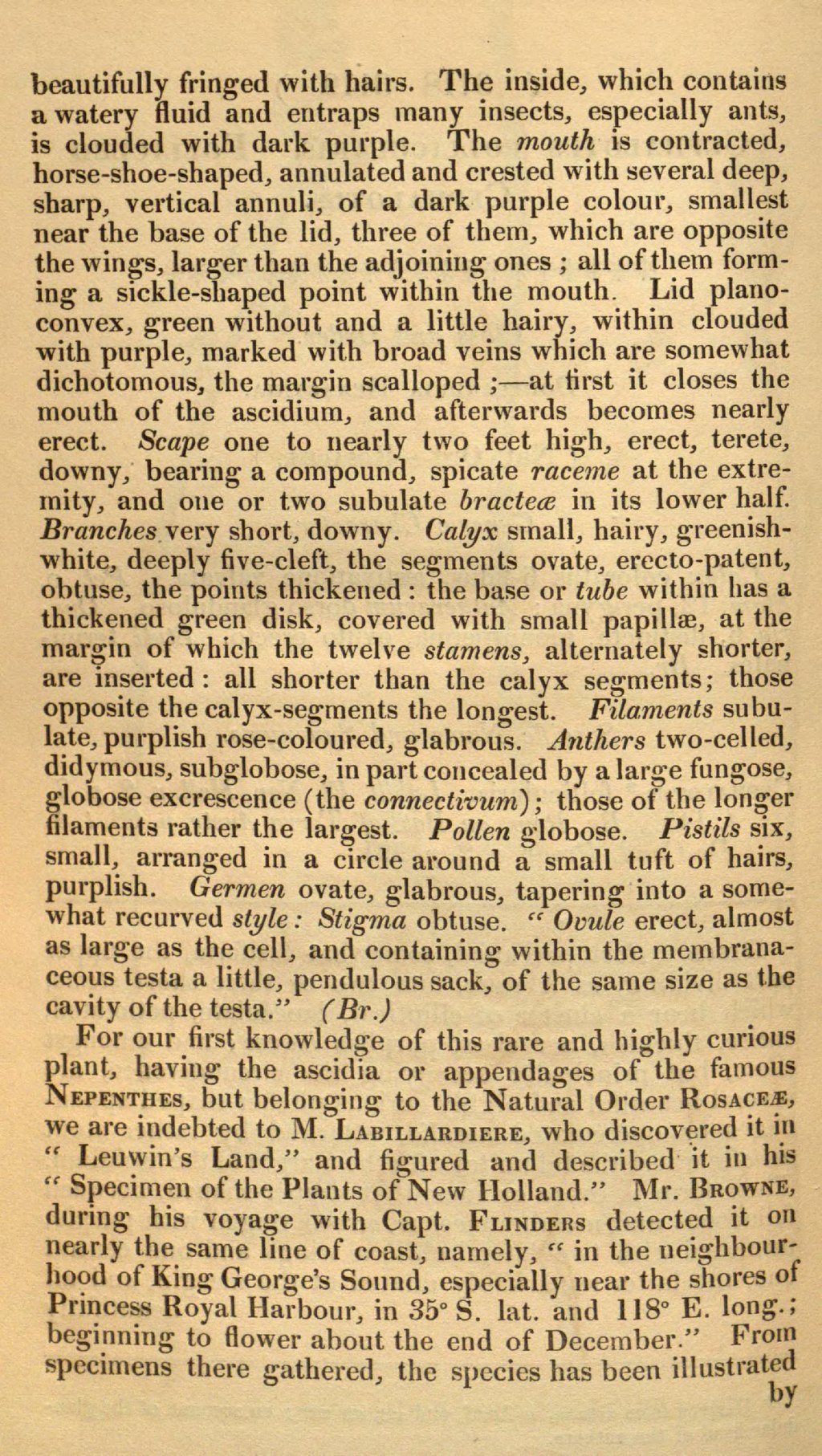beautifully fringed with hairs. The inside, which contains a watery fluid and entraps many insects, especially ants, is clouded with dark purple. The mouth is contracted, horse-shoe-shaped, annulated and crested with several deep, sharp, vertical annuli, of a dark purple colour, smallest near the base of the lid, three of them, which are opposite the wings, larger than the adjoining ones; all of them forming a sickle-shaped point in the mouth. Lid planoconvex, green without and a little hairy, within clouded with purple, marked with broad veins which are somewhat dichotomous, the margin scalloped;—at first it closes the mouth of the ascidium, and afterwards becomes nearly erect. Scape one to nearly two feet high, erect, terete, downy, bearing a compound, spicate raceme at the extremity, and one or two subulate bracteæ in its lower half. Branches very short, downy. Calyx small, hairy, greenish-white, deeply five-cleft, the segments ovate, erecto-patent, obtuse, the points thickened: the base or tube within has a thickened green disc, covered with small papillæ, at the margin of which the twelve stamens, alternately shorter, are inserted: all shorter than the calyx segments; those opposite the calyx-segments longest. Filaments subulate, purplish rose-coloured, glabrous. Anthers two-celled, didymous, subglobose, in part concealed by a large fungose, globose excrescence (the connectivum); those of the longer filiments rather the largest. Pollen globose. Pistils six, small, arranged in a circle around a small tuft of hairs, purplish. Germen ovate, glabrous, tapering into a somewhat recurved style: Stigma obtuse. "Ovule erect, almost as large as the cell, and containing within the membranaceous testa a little, pendulous sack, of the same size as the cavity of the testa." (Br.)
For our knowledge of the rare and highly curious plant, having ascidia or appendages of the famous Nepenthes, but belonging to Natural Order Rosaceæ, we are indebted to M. Labillardiere, who discovered it in "Leuwin's Land," and figured and described it in his "Specimens of the Plants of New Holland." Mr. Browne, during his voyage with Capt. Flinders detected it on nearly the same line of coast, namely, "in the neighbourhood of King Georges Sound, especially near the shores of Princess Royal Harbour, in 35° S. lat. and 118° E. long.; beginning to flower about the end of December." From specimens there gathered, the species has been illustrated
